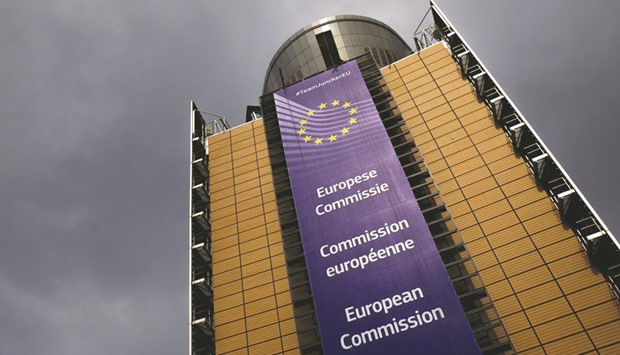The European Union is considering easing bank-failure rules introduced to end the era of expensive taxpayer-funded bailouts.
A discussion paper prepared by the European Commission, the EU’s executive arm, envisions setting EU loss-absorbency requirements for its biggest banks, led by HSBC Holdings and Deutsche Bank, in line with those issued in November by the Financial Stability Boardfor the world’s 30 most systemically important lenders. The paper, dated this month and seen by Bloomberg, “explores possible options” for implementing the FSB rule in the EU and isn’t binding on the Brussels-based commission.
Yet Elke Koenig, head of the euro area’s bank resolution authority, has repeatedly said that the currency bloc would exceed global standards to ensure its biggest banks can be restructured and recapitalised without threatening financial stability. “On nine out of 10 occasions,” requirements in the banking union would be stiffer than the FSB’s rules on total loss-absorbing capacity, or TLAC, she said in December.
As the EU prepares to implement global banking standards including TLAC, the leverage ratio and the net stable funding ratio, it’s struggling to boost lending and kick-start the economy. As a result, Jonathan Hill, the EU’s financial-services commissioner, has said he’ll take into account the impact these rules could have on European business.
“That’s the approach to legislation we will be bringing forward this year to implement the total loss absorbing capacity requirement,” Hill said last month, vowing to come forward by the end of the year with “a proposal on how to apply these rules in a way that makes sense for Europe.”
Koenig’s Single Resolution Board is watching the policy debate closely, and she’s not alone. While the euro area currently has eight banks on the FSB’s top-30 list, two other EU nations, the UK and Sweden, count five more between them, including HSBC.
The FSB requires banks to issue ordinary shares, subordinated debt and other potentially loss-absorbing securities equivalent to 18% of risk-weighted assets by 2022. A 6.75% leverage ratio requirement will also apply.
Koenig has consistently spoken of a loss-absorbing baseline for top banks of 8% of total assets; in December, she said this equated roughly to 24% on a risk-weighted basis. This 8% figure corresponds to the amount of total liabilities, including own funds, that must be wiped out under EU law before a bank in resolution can tap into rescue funds built up from levies on the industry.
The commission’s discussion paper states that European firms on the FSB list would be held to the greater of the two standards - based on risk-weighted assets or a leverage ratio exposure measure - as laid out by the Basel-based global regulator.
In addition to the potentially lower minimum loss-absorbing requirement for big lenders, the paper sets out a series of conditions to be met before bank-specific add-ons could be applied. Authorities would need to consider a “resolvability assessment” of the bank and whether extra requirements are “proportionate and necessary,” it states.
A high MREL requirement “would need to be substantiated as necessary on grounds of potential loss absorption needs,” according to the document, meaning the authority would need to show “that the bank is likely to incur the extent of losses that justify such a high calibration.”
A European Commission spokeswoman declined to comment on the paper when contacted on Thursday.
Taken together, its discussion points raise the question of whether banks will be required to have the liabilities and own funds available for bail-in so they can gain access to rescue funds in a crisis. The European Banking Authority has said that the EU’s loss-absorbency standard, known as the minimum requirement for own funds and eligible liabilities, or MREL, is needed to “ensure the effectiveness of the bail-in tool.”
The commission paper on implementing TLAC in EU law envisions a two-tier system, with a minimum MREL requirement and a possible bank-specific surcharge. EU law states that resolution authorities, such as Koenig’s Single Resolution Board in the euro area, will set the level of MREL for banks on a case-by-case basis.

The European Commission headquarters is seen in Brussels. The EU is considering easing bank failure rules introduced to end the era of expensive taxpayer-funded bailouts.


